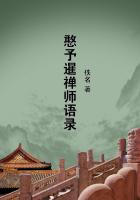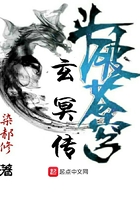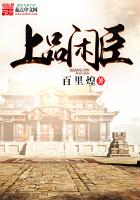In the central enclosure are the remains of great structures that must once have been remarkable for their grandeur and dignity.These immediately surrounded the king's palace;but in 1565the Muhammadans worked their savage will upon them with such effect that only the crumbling ruins of the more massive edifices amongst them still stand.The site of the palace itself is marked by a large area of ground covered with heaps of broken blocks,crushed masonry,and fragments of sculpture,not one stone being left upon another in its original position.
To return to Nicolo.He continues:--
"The inhabitants of this region marry as many wives as they please,who are burnt with their dead husbands.Their king is more powerful than all the other kings of India.He takes to himself 12,000wives,of whom 4000follow him on foot wherever he may go,and are employed solely in the service of the kitchen.A like number,more handsomely equipped,ride on horseback.The remainder are carried by men in litters,of whom 2000or 3000are selected as his wives on condition that at his death they should voluntarily burn themselves with him,which is considered to be a great honour for them....
"At a certain time of the year their idol is carried through the city,placed between two chariots,in which are young women richly adorned,who sing hymns to the god,and accompanied by a great concourse of people.Many,carried away by the fervour of their faith,cast themselves on the ground before the wheels,in order that they may be crushed to death --a mode of death which they say is very acceptable to their god.Others,****** an incision in their side,and inserting a rope thus through their body,hang themselves to the chariot by Nay of ornament,and thus suspended and half-dead accompany their idol.This kind of sacrifice they consider the best and most acceptable of all.
"Thrice in the year they keep festivals of especial solemnity.On one of these occasions the males and females of all ages,having bathed in the rivers or the sea,clothe themselves in new garments,and spend three entire days in singing,dancing,and feasting.On another of these festivals they fix up within their temples,and on the outside on the roofs,an innumerable number of lamps of oil of SUSIMANNI,which are kept burning day and night.On the third,which lasts nine days,they set up in all the highways large beams,like the masts of small ships,to the upper part of which are attached pieces of very beautiful cloth of various kinds,interwoven with gold.On the summit of each of these beams is each day placed a man of pious aspect,dedicated to religion,capable of enduring all things with equanimity,who is to pray for the favour of God.These men are assailed by the people,who pelt them with oranges,lemons,and other odoriferous fruits,all which they bear most patiently.There are also three other festival days,during which they sprinkle all passers-by,even the king and queen themselves,with saffron water,placed for that purpose by the wayside.This is received by all with much laughter."The first of these festivals may be the Kanarese New Year's Day,which Domingo Paes in his chronicle asserts to have fallen,during his visit to Vijayanagar,on October 12--"FESTAS EM QUE TODOS VESTEMPANOS NOVOS E RICOS E GALANTES,E CADA HUU COMO O TEM,E DAO TODOS OSCAPITAEES PANOS A TODA SUA GNETE DE MUYTAS CORES E GALANTES."[127]
The second should be the Dipavali festival,which occurs about the month of October,when lamps are lighted by all the householders,and the temples are illuminated.The deion of the third answers to the nine-days'festival,called the MAHANAVAMI,at Vijayanagar,which,during the visit of Paes,took place on September 12.The other feast of three days'duration answers to the HOLI festival.
Conti next describes the finding of diamonds on a mountain which he called "Albenigaras"and places fifteen days'journey beyond Vijayanagar "towards the north."He repeats the story which we know as that of "Sinbad the Sailor,"saying that the diamonds lie in inaccessible valleys,into which lumps of flesh being thrown,to which the precious stones adhere,these are carried up TO the summits by eagles,which are then driven off and the stones secured.The direction given,though it should rather be east than north,points to the mines on the Krishna river being those alluded to --mines which are often styled the "mines of Golkonda"by travellers.Marco Polo told the same tale of the same mines in the year 1296.Conti continues:--"They divide the year into twelve months,which they name after the signs of the zodiac.The era is computed variously...."After having given a short account of the different coinages and currencies,which is interesting,but of which the various localities are left to the imagination,he writes:--"The natives of Central India make use of the ballistae,[128]and those machines which we call bombardas,also other warlike implements adapted for besieging cities.
"They call us Franks and say,'While they call other nations blind,that they themselves have two eyes,and that we have but one,because they consider that they excel all others in prudence.'[129]














